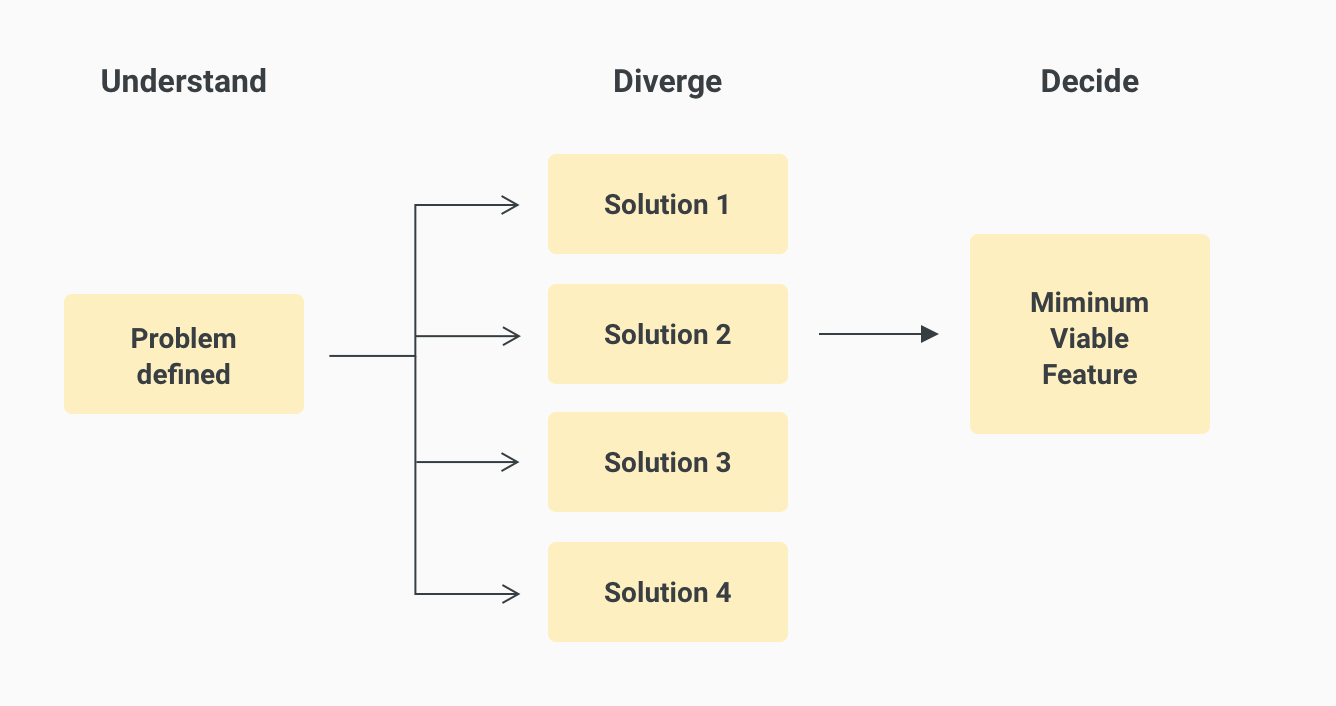Minimum Viable Feature
We talk a lot about MVPs, but once the startup has validated its product market fit and the team is growing, we stop being lean. We believe we can do bigger projects now that we have bigger teams. We forget that startups are measured by their speed of learning and adaptation.
I’m sharing four examples of MVFs from Ontruck. Each solution was thought by a different team role (a consequence of having a diverging phase).
Calculator for waiting times
One of the problems of the freight industry is the waiting times to load and unload. We charge each company an extra amount depending on the type of truck and the number of additional minutes of loading or unloading. Our Ops team was calculating that amount using physical calculators, which led to human errors and a slow process.
When we were going to help alleviate this problem, the team proposed several solutions to help with this calculus; but there was one which required no code.
The PM proposed to build a simple calculator on a Google Spreadsheet. Ops could introduce the number of minutes and the amount to charge would be calculated. We have been working like this since four months ago.
Incident management tool
More than a year ago when we started to grow in traffic, we realized we had no idea which incidents created us more problems. To reduce them, we needed to measure them.
The obvious solution was to build an incident management tool connected to Zendesk. However, on one of the diverge sessions one tech person proposed a crazy but simple idea. He suggested to reutilize an internal comment box on each order, to add incidents. We would write hashtags to indicate the incident type, reason, and responsible person.
We worked like that for five months, gathering data to start prioritizing the more time-consuming incidents. Five months later we launched a simple incident management tool.

Repeat order
At the end of the last year, we were looking at ways to reduce the time our clients spend on our website. We wanted them to order much faster. We realized many of them ordered the same shipments every week.
The obvious solution was to build them a tool so they could plan their orders for the following weeks or months. On the diverge session a designer proposed another idea, what if we just added a Repeat order link? We realized it was going to be much faster to implement, it would help more companies, and it would allow us to understand better the need to program orders for the future.
We launched it a few weeks later, and it achieved its objectives. We saved two months of work by not doing a more complicated feature.
Real-time quotes for sales
One of the requests from our Sales team was that we showed the quotes and activity from our clients in our CRM. They wanted to take action based on that.
It made sense, but we were short on resources, so we did a diverge. One of the sales people proposed that we could send them to a Slack channel. We saved at least two weeks of work.
Once you launch these MVFs, as always, you need to measure and analyze them to check if you need to iterate or you have added enough value for several months. If you have done an excellent job, you would have earned precious time to tackle other problems. Saving time is the primary objective.